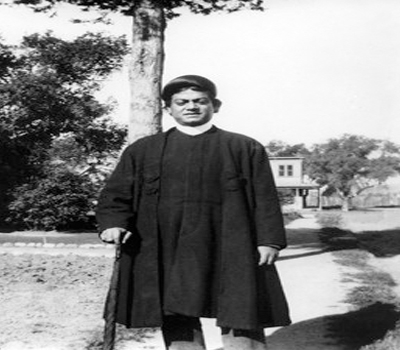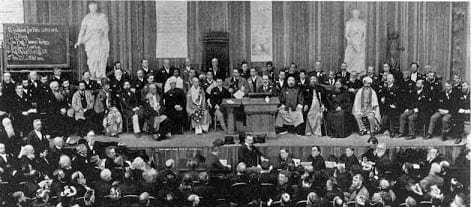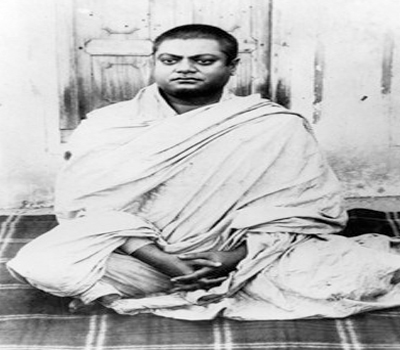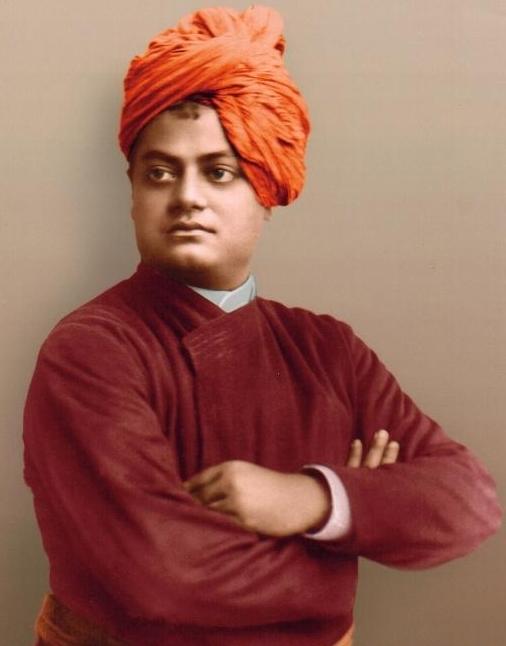(Continued from previous issue…)
This article was presented as a paper at the seminar on ‘Man and Freedom’, jointly sponsored by the Indian Academy of Philosophy and the Ramakrishna Mission Institute of Culture (RMIC) on 22 January 2000. It is being reproduced here from RMIC’s journal Bulletin where it was published in July 2006.
It is well known that ethics and morality are not one and the same. Morality refers to actual behaviour, whereas ethics is a systematic study of the criterion or standard for the judgement of moral conduct or character. Western theories of ethics may be broadly divided into two groups: deontological and teleological. By deontology is meant the study of moral obligation (from Greek deont = obligatory). Deontological theories hold that the basis of ethics is man’s sense of moral obligation. We all feel an inherent urge to act morally and, if we don’t act morally, we feel guilty about it. JudeoChristian ethics is mostly based on this inherent sense of moral obligation. Immanuel Kant tried to develop an ethical theory independent of religion but ended up by reaffirming man’s inherent sense of moral obligation which he called ‘categorical imperative’.
Teleological theories hold that our actions are guided by our desire to attain some goal. That goal is usually regarded as happiness; this view is known as hedonism. Most of the teleological theories are really hedonistic theories. The best known theory of this kind is utilitarianism propounded by Bentham, Mill, and others.
In India the deontological theory of ethics was held by the Mimamsakas (especially the Prabhakara school), and teleological theory of ethics was held by the Naiyayikas.
Both the types of theories take into consideration only the urges, desires, and actions of man which belong to the mind and body. They do not take into consideration the true ontic essence of man, his true Self, the Atman. Since the Atman is beyond body and mind, it is regarded as beyond the field of ethics. This has been stated clearly by Sri Shankaracharya in his commentary on the first aphorism of Brahma-Sutra, and in several other contexts.
It was Swami Vivekananda who showed that the freedom and purity of the Atman can form the basis of human thinking and actions. Swamiji laid the foundation for a truly ontological theory of ethics which is much superior to the deontological and hedonistic theories mentioned above. It makes ethics a study of the way the freedom of the Self manifests itself in a multitude of ways. This does not mean that Swami Vivekananda overlooked the evil tendencies in man or the compulsive nature of human actions. Like Mencius, who said that man has only ‘potentialities of goodness’, Swamiji too stated that man is only potentially divine. Man as man is not divine, but he has in him the potential to become divine.
The soul’s divinity and freedom remain in a potential state because their manifestation is restricted by mental and physical automatisms. All normal thinking, feeling and willing are controlled by latent impression of past experiences called samskaras. It is under the influence of samskaras that people do good actions or bad actions. Says Swami Vivekananda, “What are you but mere machines until you are free? Should you be proud because you are good? Certainly not. You are good because you cannot help it. Another is bad because he cannot help it.”17
Mere talking about morality
is not enough; it is necessary
to control the samskaras.
Therefore, mere talking about morality is not enough; it is necessary to control the samskaras. Swamiji again says, “We hear ‘Be good,’ and ‘Be good,’ and ‘Be good,’ taught all over the world. There is hardly a child, born in any country in the world, who has not been told, ‘Do not steal’, ‘Do not tell a lie’, but nobody tells the child how he can help doing them. Talking will not help him. Only when we teach him to control his mind do we really help him.”18
The minds of most people are conditioned by their samskaras. Good and bad actions are the result of this mental conditioning. True moral freedom is freedom from the hold of samskaras. How to attain this inner freedom? According to Swamiji, it is done through yoga. “We have to get the power to become moral;” says Swamiji, “until we do that we cannot control our actions. Yoga alone enables us to carry into practice the teachings of morality.”19 The more a person is freed from the hold of samskaras, the greater the freedom of Atman that he feels within himself. Only a yogi who has realized the Atman enjoys moral freedom without the need for rules and regulations.
This view resolves the conflict between ‘free will’ and ‘determinism’ (also known as ‘freedom’ and ‘necessity’) that has plagued Western thought all through its history. The basic question here is whether human actions are all determined by instincts and desires or by God, and whether man has the freedom to choose between good and evil. In the religious context, the more moderate Catholic view is that God has given man the freedom to choose between good and evil but, left to themselves, most people would choose evil rather than good because of the presence of ‘Original Sin’ in their souls. Protestantism denies free will to man. According to Martin Luther, “Man is as unfree as a pillar of salt.” John Calvin’s doctrine of predestination would make even sinful actions willed by God. In secular philosophy Schopenhauer, Spinoza, Hume and others upheld determinism . According to Schopenhauer, “A man can surely do what he wills to do, but he cannot determine what he wills.” As Bertrand Russell put it, “We can do as we please but we can’t please as we please.”20
This conflict between determinism and free will never figured prominently in Indian thought. In Hindu philosophy the will, known as dhriti or iccha, is only a special function of buddhi known as adhyavasaya o r determination. The whole mind (known as antahkarana), including the buddhi, is governed by the action of samskaras. The only thing that is free is the Atman or the Self in its true nature; but, being limited by, and reflected in the buddhi, it appears as the empirical self known as the jiva or jivatman. It is this empirical self that experiences the urge to be free. Thus freedom and bondage refer to the self, and not to the will, in Hindu philosophy.
As the identification of the Self with mind and body gets reduced by the practice of yoga, the person experiences greater inner freedom and his will gets freed from the hold of desires and instincts. As Swami Vivekananda has stated, “Remember, only the free have free will.”
It should, however, be noted that these higher ideas of religion are known only to a small number of educated people in India. The common people are very often guided by superstitions, fatalistic thinking and village customs which have introduced a sense of helplessness, futility and hopelessness into their lives. Swamiji wanted to free their minds from this inner stranglehold and rouse the inherent strength to shape their own destiny. Hence he very much wanted to disseminate the liberating and strengthening higher ideas of religion in India. This leads us to the next topic.
Spiritual freedom
From the above discussion it is clear that all the types of freedom discussed thus far— social freedom, intellectual freedom and moral freedom—are freedom only in a relative sense. Absolute freedom is the absolute freedom of the Self, and this is what spiritual freedom means. To attain freedom of the Self means to cease to identify oneself with one’s body and mind and to identify oneself with the Supreme Self. This state of absolute freedom is known as mukti or moksha. In traditional Hinduism mukti is regarded as freedom from transmigration or rebirth. But since the cause of rebirth is the identification of the Self with body and mind, and the cause of this identification is ignorance of the true nature of the Self, Advaitins regard mukti as freedom from original ignorance resulting from the attainment of true knowledge.
The Advaita tradition speaks of two kinds of mukti. One is the state of immediate and ultimate release; this is known as sadyomukti. The other type, known as krama-mukti, takes place in stages . According to Sri Shankaracharya, those who practice meditation (upasana) on Saguna Brahman attain identity with Hiranyagarbha after death. Later on they may attain identity with the Supreme Impersonal Brahman and attain final liberation.
Several Hindu sects hold the view that mukti is a state which is attained only after death; this is known as videha-mukti. But the Advaita tradition holds that, since total destruction of ignorance is possible even when a person is alive, mukti is possible even while living; this kind of mukti is called jivanmukti. The goal of all spiritual endeavour is to attain this state of liberated-in-life.
In almost all the schools of Hindu thought, mukti, whatever be its nature, is an individual event, and only a few exceptionally qualified individuals can attain it. Hence, there will remain many millions who have not attained liberation. Although this is the most commonly held belief, there have been a few teachers who believed in collective salvation, in the liberation of all; this is known as sarva-mukti.
Swami Vivekananda has referred to the idea of sarva-mukti on more than one occasion. In the course of a conversation with his disciple Sharat Chandra Chakravarty, Swamiji once remarked, “What is the good of that spiritual practice or realisation which does not benefit others, does not conduce to the well-being of people sunk in ignorance and delusion, does not help in rescuing them from the clutches of lust and wealth? Do you think, so long as one jiva endures in bondage, you will have any liberation? So long as he is not liberated— it may take several lifetimes—you will have to be born to help him, to make him realize Brahman. Every jiva is a part of yourself—which is the rationale of all work for others.”
Swami Vivekananda’s
primary concern was the
alleviation of human
suffering, and not
philosophical speculation.
For him freedom meant
freedom from suffering more
than anything else.
When the disciple exclaimed that it was a new idea that without the salvation of all there would be no salvation for an individual, Swamiji continued, “There is a class of Vedantists who hold such a view. They say that individual liberation is not the real and perfect form of liberation, but universal and collective liberation is true Mukti. Of course, both merits and defects can be pointed out in that view.”21
One of the earliest to propound the ideal of sarva-mukti was Bhartriprapanca who probably lived one or two centuries before Sri Shankara.22 This idea was later championed by the 16th century Vedantin, Appayya Dikshita.23 The basic argument of Appayya is as follows: Mukti means identification with Ishwara only, and not with the Impersonal Nirguna Brahman. As long as one jiva remains in bondage, collective ignorance will persist. When all the jivas are liberated, collective ignorance itself will vanish; and then Ishwara will ipso facto become the Absolute Brahman. It is difficult to say whether Swamiji accepted all the arguments of Appayya, but it is clear that Swamiji must have found Appayya’s view—that the liberated jiva, after attaining oneness with Ishwara, participates in Ishwara’s work of doing good to the world—most attractive.
Two points are to be noted in this context. One is that Swamiji’s primary concern was the alleviation of human suffering, and not philosophical speculation. For him freedom meant freedom from suffering more than anything else. His great heart bled at the sufferings of people. He himself worked incessantly, travelling from place to place teaching, exhorting, inspiring, guiding, awakening people everywhere. He laid his life at the altar of service to humanity. Out of the agony of his soul he cried, “Will such a day come when this life will go for the sake of others’ good? The world is not a child’s play— and great men are those who build highways for others with their heart’s blood. This has been taking place through eternity, that one builds a bridge by laying down his own body, and thousands of others cross the river through its help. Be it so! Be it so!”24
The other point to be noted is that Swami Vivekananda was first and foremost a spiritual personality and his ultimate aim was the spiritual regeneration of humanity. Swamiji knew only too well that the only freedom worth striving for was spiritual freedom. He regarded all the other types of freedom as a means to the attainment of spiritual freedom. Social freedom, intellectual freedom, and moral freedom have each its own intrinsic value, no doubt. But they cannot give man lasting freedom from sorrow nor give ultimate fulfilment. Those types of freedom should be regarded as stepping-stones on the path to spiritual freedom.
In India Swamiji emphasised social freedom more because that was the crying need of the masses. For millions of sunken people living in destitution the only meaningful freedom is freedom from hunger. So Swamiji said, “Bread! Bread! I do not believe in a God, who cannot give me bread here, giving me eternal bliss in heaven! Pooh!”25 Swamiji’s words criticising untouchability, exploitation, and priestcraft fell like bombshells upon Indian society and blasted the bastions of vested interests, superstition and selfishness, and had a tremendous liberating influence on the Indian mind.
But Swamiji never missed an opportunity to remind people both in India and in the West that spiritual freedom is the ultimate goal of life. In his famous lecture on ‘Vedantism’ he clearly stated the relative merits of the different types of knowledge. “The highest of gifts is the giving of spiritual knowledge, the next is the giving of secular knowledge, and the next is the saving of life, the last is giving food and drink. He who gives spiritual knowledge saves the soul from many and many a birth. He who gives secular knowledge opens the eyes of human beings towards spiritual knowledge, and far below these rank all other gifts, even the saving of life. Therefore, it is necessary that you learn this and note that all other kinds of work are of much less value than that of imparting spiritual knowledge.”26
Swamiji emphasised spiritual knowledge because it alone can free men and women from misery for ever. As he pointed out, “One idea that I see clear as daylight is that misery is caused by ignorance and nothing else.”27 Spiritual freedom means the destruction of the very roots of ignorance and the attainment of everlasting peace.
Swamiji’s integral view
We have seen that, according to Swami Vivekananda, freedom is a characteristic attribute of life which manifests itself as an existential urge at the social, intellectual, moral, and spiritual levels of human existence. This urge has a negative aspect which is expressed as ‘freedom from’ and a positive aspect which is expressed as ‘freedom for’. It is usually the negative aspect of freedom that is stressed. We chafe at restrictions and struggle to go beyond our limitations. But what do we seek freedom for? To fulfil our needs. Man has a hierarchy of needs. At the social level we seek freedom to live, to work, to express, to worship, and so on. At the intellectual level we seek freedom to know, to feel, to think. At the moral level we seek freedom to lead a moral life. At the spiritual level we seek freedom to attain immortality and everlasting peace.
Can all these different types of freedom be unified in to an integral quest , an all-inclusive ultimate purpose? One widely followed view, popularised by some of the modern psychologists, is that quest for happiness is the basic urge in man. It is, however, well known that no civilised person can remain satisfied with lower pleasures. Freedom must have a higher purpose.
Karl Marx regarded self-realisation as the basic urge in man. By self-realisation he meant the expression of the inherent potentialities in man. He wanted to bring into existence a society where every individual would be free to express his creativity freely.
As the French philosopher Henri Bergson has pointed out, the paradox of freedom is that by the very exercise of freedom we lose it. A person who seeks freedom to fulfil all his desires and drives soon becomes a slave of them. In the words of Samuel Johnson, ‘The chains of habit are generally too small to be felt till they are too strong to be broken.’ This is true even of our intellectual life. We learn to think in a particular way and become imprisoned by our own thoughts.
Swami Vivekananda developed a holistic view of life which unifies all the different types of freedom into an integral quest and liberates man from all bonds at all levels of existence. The goal of life according to him is to manifest the potential divinity of the soul. Swamiji said, “My ideal, indeed, can be put into a few words, and that is: to preach unto mankind their divinity, and how to make it manifest in every movement of life.”28 When the social freedom, intellectual freedom, moral freedom and spiritual freedom that we seek become unified into a single evolutionary purpose, every second of human life becomes a meaningful and liberating experience.
In conclusion, we may state that Swami Vivekananda has made significant contributions to our understanding of different dimensions of human freedom at the individual and collective levels; he has given us an integral paradigm of liberating life; and he himself strove to extend the frontiers of human freedom.
For centuries to come there will echo in different parts of the civilized world the song of his soul, “Freedom, O freedom! Freedom, O freedom.”
(Concluded.)
Notes and References
17) The Complete Works of Swami Vivekananda [hereafter Complete Works]. 2:34.
18) Ibid., 1:171
19) Ibid., 8:43
20) It may also be mentioned here that existentialist philosophers look upon freedom as a necessary condition arising from man’s individuality. Freedom means choice, and choice always means conflict. Hence, freedom is not a state of happiness. As Sartre has put it, “Man is condemned to be free.” Some believing existentialists like Gabriel Marcel and Paul Tillich regard freedom as liberation from one’s isolated individuality through participation in the Divine.
21) Complete Works. 7:235-36.
22) For a study of Bhartriprapanca’s view, see M. Hiriyanna, Indian Philosophical Studies Mysore: Kavyalaya Publishers, 1957, pp. 79-94.
23) For a critical examination of Appayya’s view see K.R. Srinivasa Iyengar’s paper Sarva-mukti presented at a symposium of the Indian Philosophical Congress in 1932.
24) Complete Works. 6: 273-74.
25) Ibid., 4:368.
26) Ibid., 3:133.
27) Ibid., 1:501.
28) Ibid
Source : Vedanta Kesari, May, 2021






[…] Swami Vivekananda and the Concept of Freedom in Indian Culture – Part 2 […]